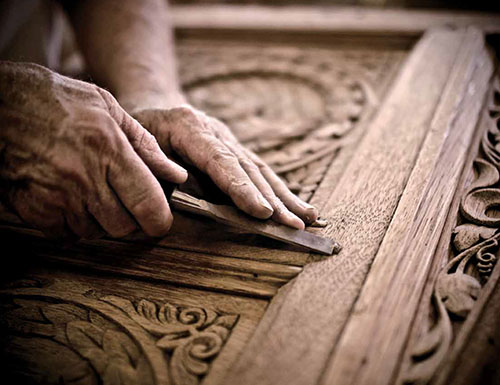Hull Historical Millwork: telling the story of a building.

When Barbra Streisand called, Brent Hull knew he had made it. He’d been doing restoration and millwork for more than a decade, ever since he started his business in his brother’s garage in Fort Worth, Texas. He’d built it steadily, like most craftsmen: repairing historic homes, doing residential remodels, working on a historic courthouse renovation after it had burned down.
But it was his 2003 book, Historic Millwork, that fortified his reputation enough for an icon to ask him to work on her home. By the time Streisand called, “I knew I’d developed a name. But I still don’t feel like I’ve made it. I still have work to do; there’s so much I don’t know, so much I’m still learning.” Many think Hull already knows as much as one can about historic millwork and molding. Not only did he literally write the book on it, but his company now employs more than fifty people, and his design and renovation projects take him to places far beyond North Texas. That doesn’t even factor in the speaking, teaching, and writing Hull does regularly on the subject. “It’s my job, but it’s more than that,” he says. “It’s my passion.”
Hull always liked making things with his hands—pottery and crafts, LEGO sculptures, even a mini-boat with a motor attached. (This last project led to his degree from the North Bennet Street School in Boston, which also gave him a distinguished alumni award.)
Most of the woodworking projects the company takes on now have a common theme: They require an understanding of and appreciation for old-world craftsmanship. “We bring focus to details that are historical, that were prominent historically,” he says. “We bring that because people want it today, and they can’t find it anywhere else.”
Hull believes an integral part of what he does is helping to tell the story of a building. This could mean hand-carving detail the way it was done over a century ago to helping the architect on a restoration project understand the style of millwork that
was originally used in that region. (Hull has a two-thousand-piece library of historical reference books.)
“So if someone says, ‘I want a French-style house,’ the questions begin,” he says. “We go to our French books and ask, do you want high-style Parisian, or simple French country? What materials, what region, how ornate? Then we suggest millwork packages and moldings based on historical precedent. So we’ll make suggestions, they’ll respond, and we’ll get a taste for what they like. We show them how their decisions influence the rest of house. We explain very carefully that the decisions we make determine how the story of that house will be told.” Hull knows his passion for detail and authenticity isn’t for everyone. “The people I work with want to build something with purpose, with meaning, something that makes sense. They want to have a conversation in the new world with an old-world master craftsman. And that’s where we want to be.”





